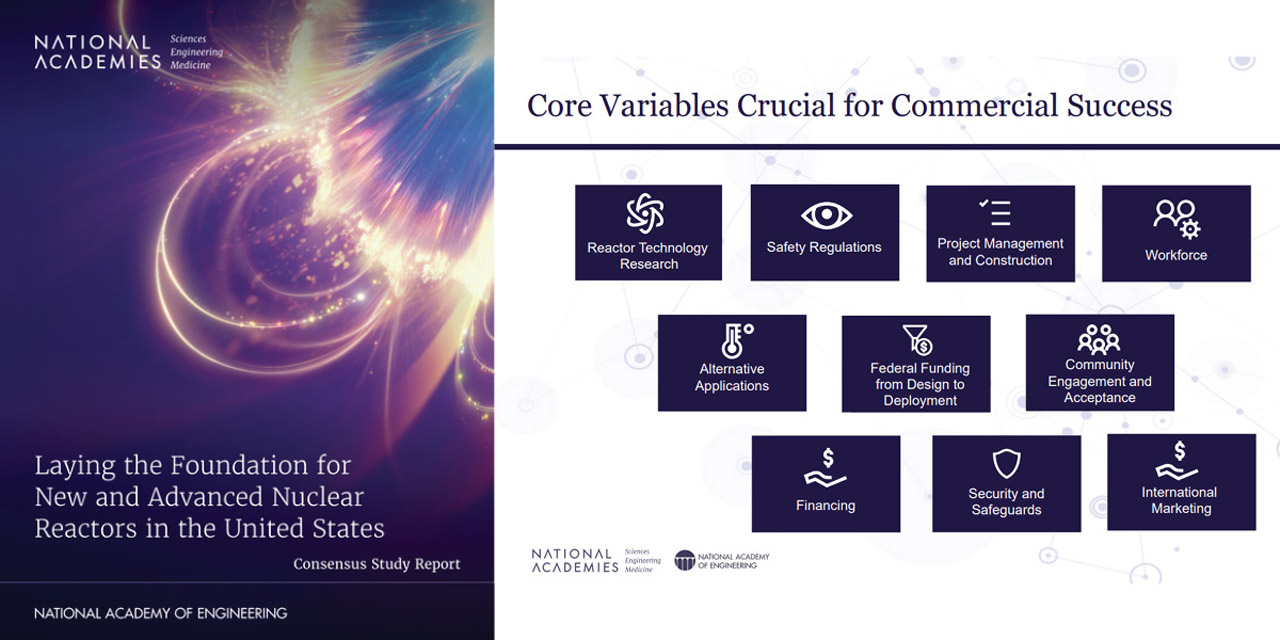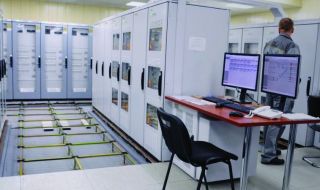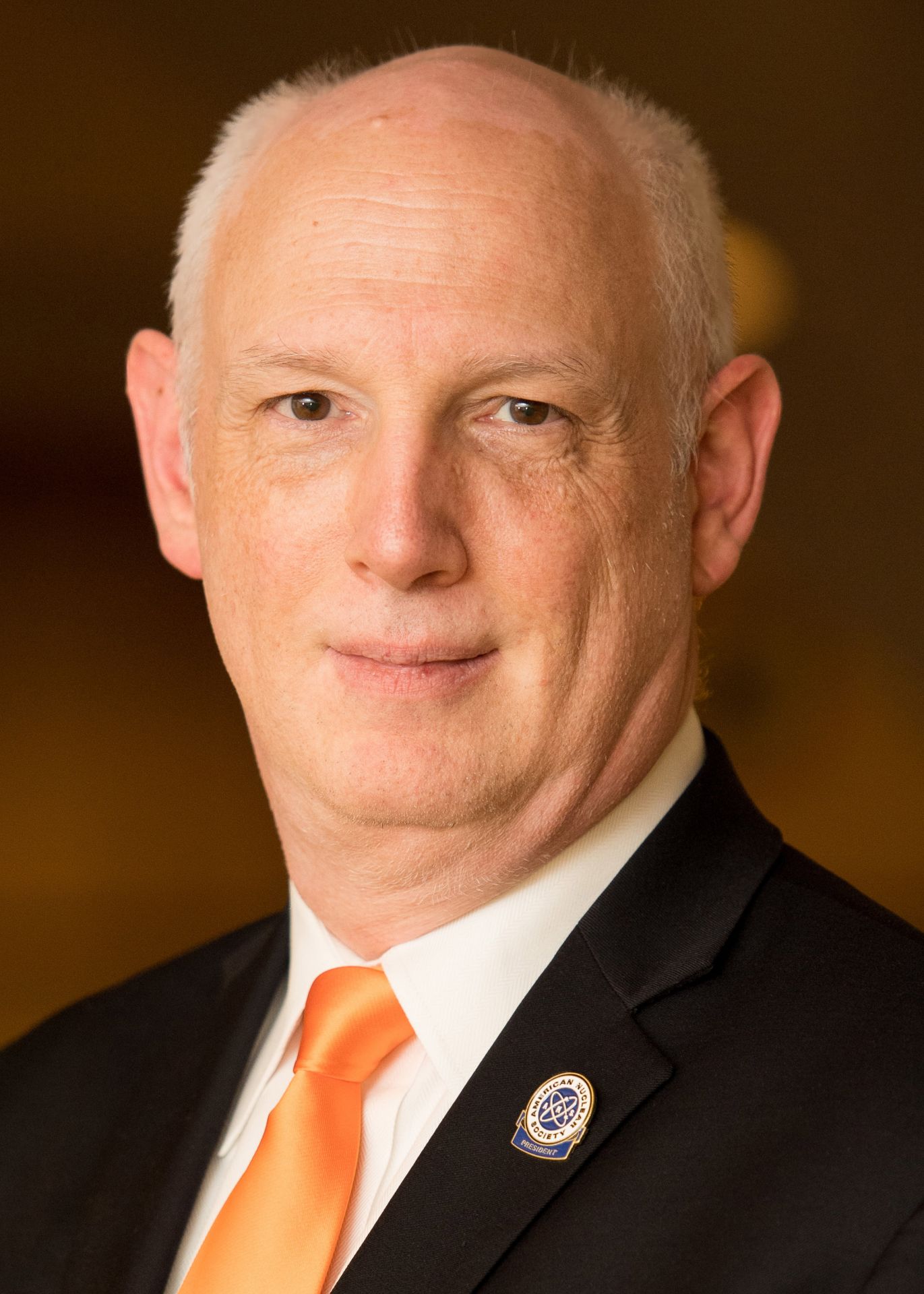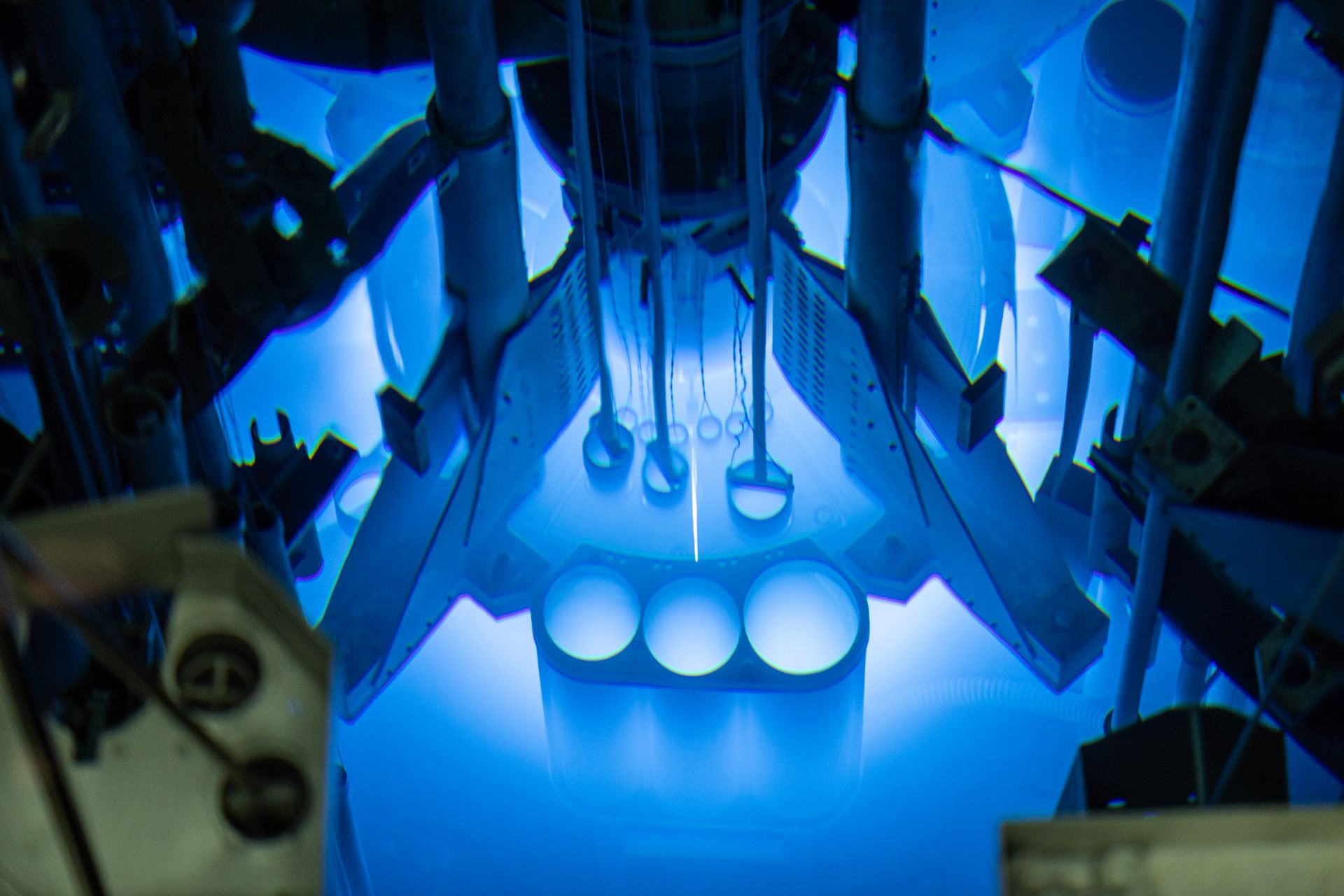This slide on the right from the consensus committee’s public briefing identifies 10 core variables that are important to the success of advanced reactor deployments. (Image: NASEM, Laying the Foundation for New and Advanced Nuclear Reactors in the United States)
SHINE’s Mo-99 production building under construction in October 2022. (Photo: SHINE)
Fusion development company SHINE Technologies announced that it will begin offering radiation effects testing in a dedicated facility on the company’s Janesville, Wis., campus later this year. SHINE will use high-energy fusion neutrons to test mission-critical components that are susceptible to radiation-harsh environments on behalf of its aerospace and defense customers.
A side-by-side comparison of a standard plasma configuration (at left) and the plasma created during the negative triangularity campaign at DIII-D, which was made possible by the installation of a temporary divertor region. (Image: General Atomics)
The DIII-D National Fusion Facility in San Diego, Calif., has completed a monthlong research campaign using a negative triangularity plasma configuration inside its fusion tokamak and produced initial data that “appear very encouraging,” according to an April 24 news release from General Atomics (GA), which operates the Office of Science user facility on behalf of the Department of Energy. Full experimental results on “the highest-powered negative triangularity experiments in the history of the U.S. fusion research program” are expected this summer, according to GA.
A member of Brookhaven’s MIRP team in the new hot cell area used for processing targets to make medical isotopes such as actinium-225. (Photo: BNL)
A refurbished hot cell laboratory is allowing the Department of Energy’s Brookhaven National Laboratory to streamline the production and shipment of actinium-225 to support clinical trials of cancer therapies.
April 21, 2023, 3:19PMNuclear NewsSal Oriti, Ernestina Wozniak, and Max Yang The multimission radioisotope thermoelectric generator for NASA’s Mars 2020 Perseverance rover is tested at NASA’s Kennedy Space Center in 2020. The choice of an MMRTG as the rover’s power system gave mission planners significantly more flexibility in selecting the rover’s landing site and in planning its surface operations. (Photo: NASA)
Under the Radioisotope Power Systems Program, NASA and the Department of Energy have been advancing a novel radioisotope power system (RPS) based on dynamic energy conversion. This approach will manifest a dynamic RPS (DRPS) option with a conversion efficiency at least three times greater than a thermoelectric-based RPS. Significant progress has recently been made toward this end. A one-year system design phase has been completed by NASA industry partner Aerojet Rocketdyne, which resulted in a DRPS with power of 300 watts-electric (We) with convertor-level redundancy. In-house technology development at the NASA Glenn Research Center (GRC) has demonstrated the conversion devices in relevant environments and has shown all requirements can be met. Progress has also been made on the control electronics necessary for dynamic energy conversion. Flight-like controllers were recently upgraded and achieved an 11-percentage-point increase in efficiency. Control architectures have been developed to handle the multiconvertor arrangements in the latest DRPS design. A system-level DRPS testbed is currently being assembled that will experimentally demonstrate the DRPS concept being pursued.
MCRE could be built inside the ZPPR cell (shown here) at INL’s Materials and Fuels Complex. (Photo: INL)
A tiny 200-kWt reactor the Department of Energy says would be the first critical fast-spectrum circulating fuel reactor and the first fast-spectrum molten salt reactor (MSR) could be built and operated inside the Zero Power Physics Reactor (ZPPR) cell at Idaho National Laboratory’s Materials and Fuels Center (MFC). Details included in the Molten Chloride Reactor Experiment (MCRE) draft environmental assessment (EA)—released on March 16 for two weeks of public comment (later extended to four weeks, through April 14)—covered the potential environmental impacts associated with the development, construction, operation, and decommissioning of MCRE at INL, facilitated by the National Reactor Innovation Center (NRIC).
Situated in a 30-foot-deep pool, the 10 MW core of MURR is used to irradiate samples and produce isotopes for medical radiopharmaceuticals and research. (Photo: University of Missouri)
The University of Missouri intends to build a new, larger research reactor to produce medical radioisotopes, announcing that it intends to issue a request for qualification/request for proposal (RFQ/RFP) in April to solicit interest from qualified parties to provide preliminary designs and industry partnerships for the new reactor project, called NextGen MURR.
The UKAEA will provide novel fusion materials to be irradiated in ORNL’s HFIR facility over the next four years. Pictured (from left) are Kathy McCarthy, director of the U.S. ITER Project; Jeremy Busby, ORNL’s associate lab director for fusion and fission energy and science; Mickey Wade, ONRL Fusion Energy Division director; Ian Chapman, chief executive officer of the UKAEA; Cynthia Jenks, ORNL’s associate lab director for physical sciences; and Yutai Kato, ORNL Materials Science and Technology Division interim director.
The Department of Energy’s Oak Ridge National Laboratory (ORNL) and the U.K. Atomic Energy Authority (UKAEA) have formed a strategic research partnership to investigate how different types of materials behave under the influence of high-energy neutron sources. The five-year partnership was announced by ORNL and by the UKAEA on March 13.


















